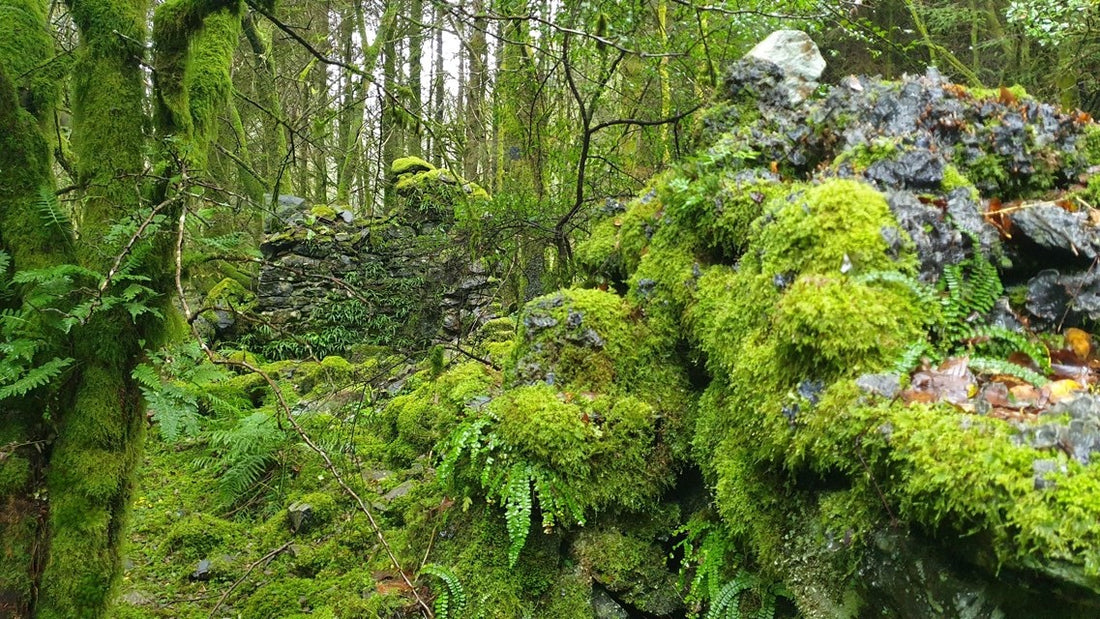Although considered primitive, ‘lower’ plants, many think mosses are fascinating, due to their biology and extremely impressive adaptability to almost any environment around the world. The structure and reproductive processes may be simple, but moss can flourish in nearly all conditions – all it needs is moisture. A mat of moss is made up of thousands of tiny individual mosses that group together to increase their absorption and retention of water. Moss sits within a division of plants called the Bryophyta, under the sub-division Musci.
Classification:
Scientific name: Bryophyta
Rank: Phylum
Higher classification: Embryophyte
-
Primitive:
Mosses are the most primitive of land plants
-
They do not produce:
Flowers, fruits or seeds
- They do not have:
Roots, a vascular system or xylem and phloem to conduct water internally
Not roots, but Rhizoids!
Instead of roots, all species of moss have rhizoids – root-like strands at the end of moss stems.
- Multi-celled, specialised anchoring structures – making them appear root-like
- They are not true roots because they do not fulfil the water and nutrient absorption, nor the food storage role
- They help attach the gametophyte (main moss structure) or the caulid (main plant stem) to the substrate (surface from which the moss plant grows)
- They grow either at the base of the moss stem or along the stem (in trailing mosses)
- Water absorption: takes in water by capillary action – as opposed to roots, which do so via osmosis
Photosynthesis:
- Only getting minimal nutrients from water, mosses make their food through photosynthesis
- Most mosses can collect water and compounds through the air, while most plants must sequester water from the ground
- Able to take advantage of all moisture, not just rain – can take in moisture from the mist, morning dew and even fog
Unicellular:
Many mosses have leaves just one cell thick, measuring an incredibly slight 1/100th millimetre
How moss grows
Moss does not produce seeds like many higher plants and instead reproduces using spores.
- The spores are in the air and require only moisture to germinate and mature
- They must have damp conditions to reproduce
- The male cells move via a film of water to reach the female cells for fertilisation: even in the absence of rainfall, the moisture in fog or morning dew produce enough water for this to successfully occur
Where moss lives
Not just found plaguing UK lawns, mosses can be found on all seven continents.
- Moss thrives in wet environments throughout the world such as rainforests, wetlands and alpine ecosystems
- It cannot survive in saltwater
- Moss loves wooded areas, especially beside streams
- It can grow on rocks and many other hard surfaces
- Commonly found in urban areas with a wet climate - growing on brick walls, pavements, driveways and other humanmade structures
- Moss can grow on any soil as they are only shallowly anchored, without needing to draw nutrients from the soil
- Can live on almost anything – rhizoids allow mosses to attach to many different kinds of surfaces
- Some species are wholly aquatic – such as common water mosses and others that inhabit bogs, marshes and very slow-moving waterways
- Aquatic or semi-aquatic mosses can significantly exceed the normal range of lengths seen in terrestrial mosses
- Antarctica is home to ‘moss forests’ – which are among the few plants able to withstand the frozen climate
- Arctic moss is an aquatic plant which can grow underwater in the tundra; it’s adapted to the harsh winds and cold
Size
Moss is usually less than 1” in height
The limited size is due to mosses having no internal ‘pipeworks’ to transport water, and lacking a cuticle
World’s smallest:
Cape pygmy moss
(Ephemerum capensi)
- About the size of a pencil dot
- So small, it’s said to look like a ‘greenish stain’ at first sight
- Recently rediscovered in Lesotho, southern Africa
- First discovered in South African soil in the 1950s
World’s tallest:
Dawsonia superba
(Also known as Tall Dawsonia, Giant Moss)
- A Polytrichidae moss, it is the tallest land moss in the world
- Grows unusually tall for a moss plant, to heights usually reserved for vascular plants
- Also has thicker leaves than other moss species
- Typically developing as tall as 60cm
- Native to New Zealand and Australasia
- On Mount Kinabalu in Malaysian Borneo - Dawsonia superba has been measured to 100cm in height
- Despite being the tallest of all mosses, its spores are among the smallest at only 6-10 micrometres!
- Dawsonia: named in honour of Dawson Turner (1775–1858), distinguished botanist
- Superba: Latin for "great”
- How it can grow so tall: the conducting systems of their sporophytes (where its spores are produced) are similar to those of vascular plants
Best climber:
Spiridens reinwardtii
- Its vines climb to 3metres/10 feet
- Fan-like in appearance: it grows up tree trunks like a vine, but then sends out horizontal and branched shoots, somewhat parallel to the ground
- Described as ‘noble’ by Sir William Hooker, a 19th-century influential botanist
Did you know?
Mosses are ancient!
- It is thought the first land plants were moss-like
- Though fossil records of moss are sparse due to their soft-walled and fragile nature – unambiguous moss fossils have been recovered from as early as the Permian of Antarctica and Russia
Explosive!
- Even though the genus Sphagnum (also known as peat moss) is a simple, bog-dwelling moss – it employs complex aerodynamics to launch its reproductive spores into the air, a first in the plant world
- Compressed air contained in the capsules projects the spores 10-20cm off the ground
- The spores shoot at almost 89mph
- This mode of reproduction has proven successful for this plant; it covers about 1% of the earth’s surface, an area over two times the size of Texas
Plant DNA research:
- The moss Physcomitrella patens has been used as a model organism to study how plants repair damage to their DNA
Giving consideration to nature’s swathing carpet, and how despite its primitive form - it grows, spreads and prospers requiring very little, can certainly be appreciated - that is when it is prospering at a safe distance from the lawn!

